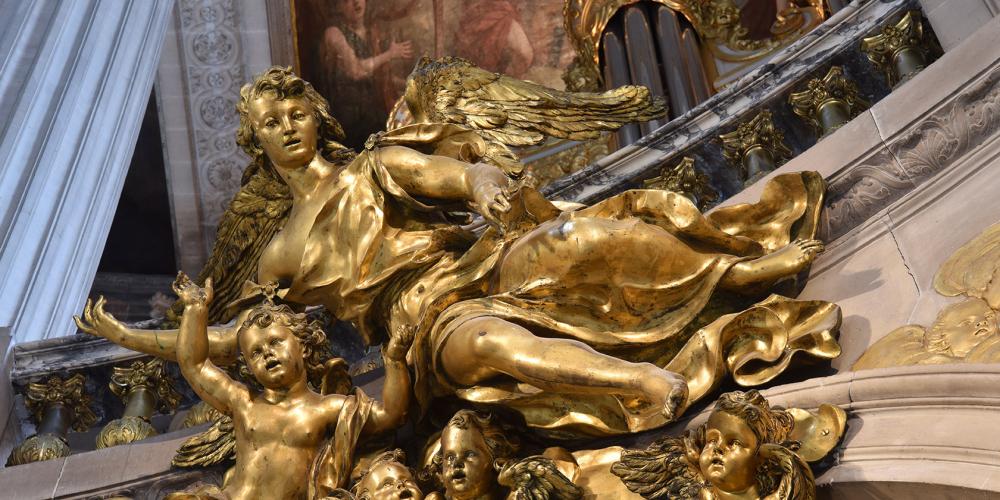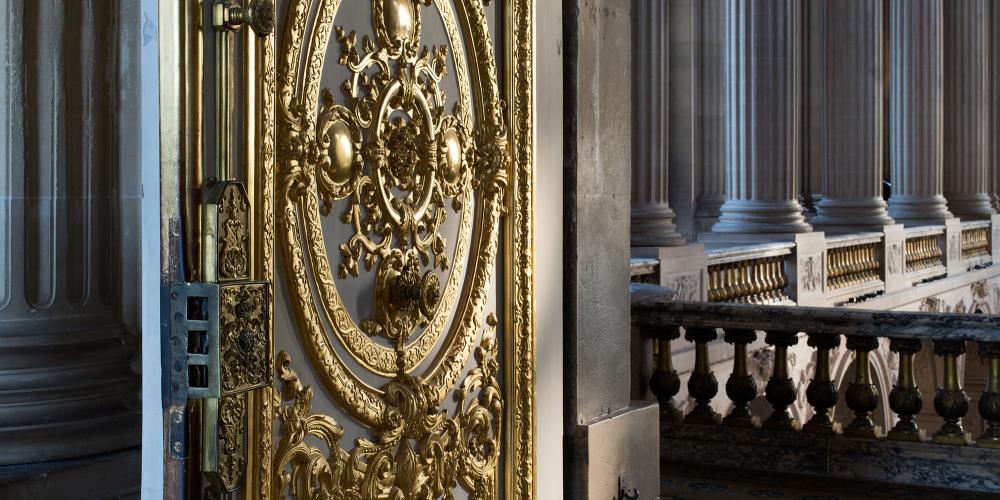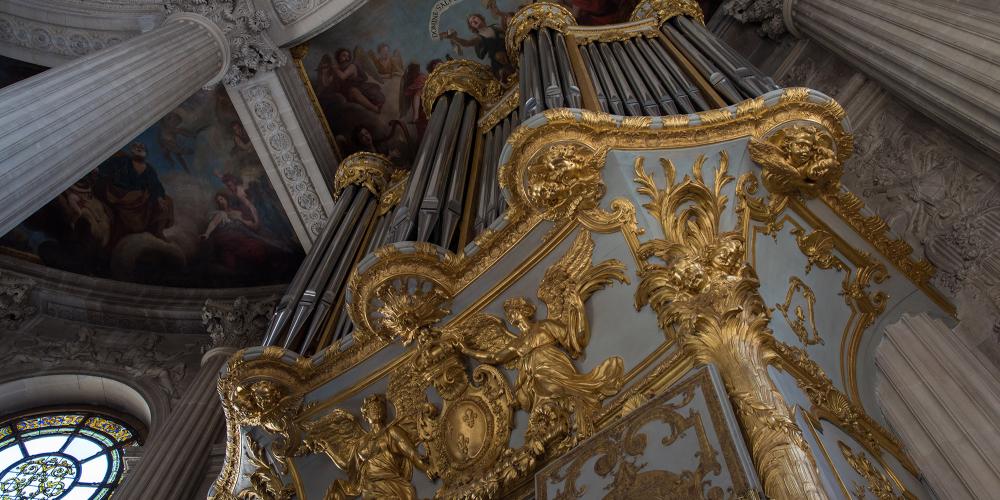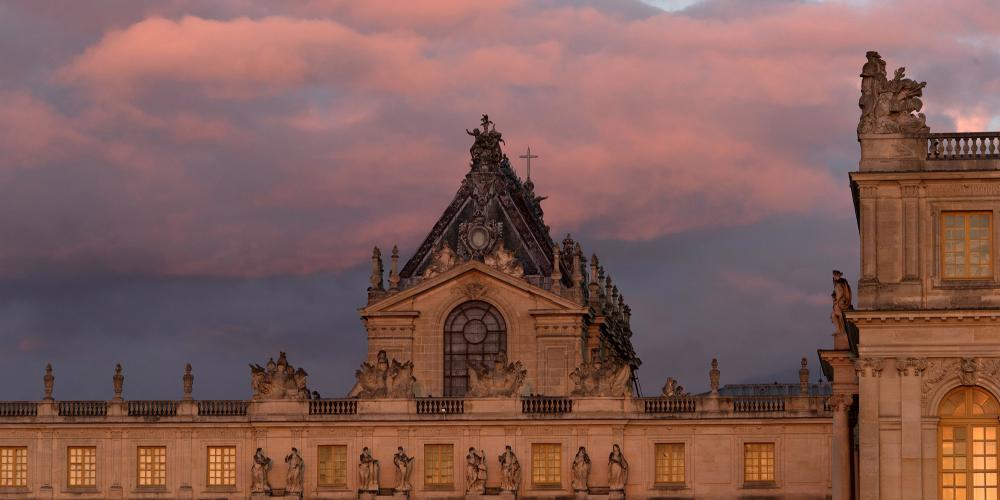Royal Chapel

The chapel was dedicated to Saint Louis, the patron saint of the king and an ancestor of the royal house, and included references to the Sainte-Chapelle of Paris which he had founded. Although the interior elevation with its layout on two floors follows the usual format for Palatine chapels, its architecture with its imposing colonnade on the first floor was clearly inspired by Antiquity.
The vaulted ceiling, which Hardouin-Mansart designed without transvers ribs to create a unified surface, is dedicated to the Holy Trinity: in the centre is God the Father in his Glory by Antoine Coypel, in the apse is The Resurrection by Charles de La Fosse, and above the Royal tribune is The Descent of the Holy Ghost by Jean Jouvenet.
The king never descended into the nave except during religious celebrations when he took communion, ceremonies of the Order of the Holy Spirit, and the baptisms and weddings of the Princes and Princesses of the Realm which were held there from 1710 to 1789.
The music of the Chapel, which was renowned throughout Europe, rang out with motets every day throughout the service, resonating from above the altar and around the organ designed by Clicquot. The instrument is decorated with a beautiful depiction of King David in relief and has been played by great musicians such as François Couperin.




